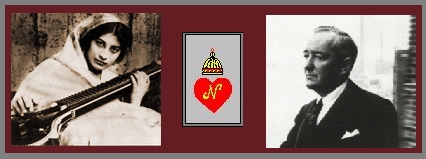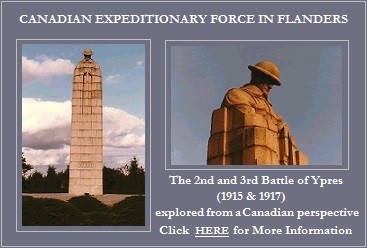Webpage dedicated to Noor Inayat Khan,
Protege of Canadian "Spy Master",
SIR
WILLIAM STEPHENSON.
Sir
William met Princess Noor on a tiger shoot
in India in 1934.
"Madeleine" an excerpt from the book: A MAN CALLED INTREPID by: William
Stevenson (no relation to the subject) This is a very informative biography of Sir William
Stephenson. Courtesy: Harcourt Brace Jovanovich, Publishers New York & London.
 Noor-un-nisa Inayat Khan and Sir William Samuel Stephenson
Noor-un-nisa Inayat Khan and Sir William Samuel Stephenson
"Madeleine" was a young woman of haunting beauty, the center of cruel controversy after
her death. "She should never have been sent to France", declared a fellow agent, quoted in
the official British history of these operations. "She was a splendid, vague, dreamy creature,
far too conspicuous - twice seen, never forgotten - and she had no sense of security...." An
attempt was made to stop her mission when spy school instructors said nothing could hide
her striking appearance. She would certainly attract German officers, which was not the
idea. A writer of children's books, she had lived in a fairy world that left no room for
cynicism or distrust. Her cover name was taken from one of her stories - the last that she
read over Radio Paris to French Children in freedom.
She was born in the Kremlin,
incredibly enough, a descendant of the Tiger of Mysore, the last Muslim ruler of South India.
Her father had been invited to teach Sufism to the Tsar in 1912. Her real name was
Noor-un-nisa Inayat Khan, "Light of Womanhood". Her American mother was the niece of
the founder of Christian Science. She had been raised by her father, the leader of an Islamic
religious movement, to believe that love and tolerance were the only weapons against
inhumanity. This doctrine - Sufism, which was to become fashionable in the west during the
1970's - had been banned in Germany as "alien to German culture". She still believed Sufism
would overcome Nazism, just as nonviolence in India must overthrow British Imperialism.
Bill Stephenson, the Canadian "Spy Master" and top man in British Intelligence during the
war, had met Princess Noor in India in 1934. He sensed steel within her seemingly timid
personality. She was nineteen years old then, stunningly pretty, gifted with an innocence
which he judged could never be corrupted. He was leading a mission of technical experts
studying India's resources and potential for self-development. He met her on a tiger shoot
arranged by her father's fellow Muslim Air Vice-Marshall Nawab Haji Khan, chief of the
Chamber of Princes and Nawab of Bhopal. The pomp and ceremony of the jungle shikaris
amused both the girl and Stephenson. They talked about a future India where the gap
between rich and poor might be narrowed through love and compassion.
The Nawab was a
close friend of Stephenson's and later, on active service with the RAF, he learned that the
Canadian kept a fatherly eye on the girl. It was in this way that Noor entered the world of
Baker Street armed with credentials. She could not remain in the RAF, however. The
regular services had a reputation against women taking part in military operations. Noor was
provided with a new identity that fitted her personality and resembled her true background.
She became Jeanne-Marie Regnier, a children's nurse, known henceforth as "Madeleine".
She needed ration books and identity papers. These were manufactured by the forgery
experts in Toronto. She required a wardrobe of essential clothing from Paris. This was
assembled by a Jewish 'manufacturer' who, having escaped himself from Europe, managed
an establishment in Montreal of expert tailors and seamstresses, who worked for purely
nominal wages, had been enrolled in the armed forces, and were sworn to secrecy. Their
skill lay in doctoring refugee clothing. There were, for example, a half dozen ways that a
button might be stitched onto a coat, depending on where it was tailored in Europe. A
wrongly sewn button could dispatch agents to death. Madeleine learned what was in store.
She was destined to join the biggest, busiest, and most hazardous of the networks,
PROSPER, covering a vast part of France, with headquarters in Paris. Its demands were
unsatiable. Its rural circuits were disrupting lines of communication by sabotage. Its guerillas
were arming for the day of liberation. It needed guns, explosives, booby traps, and money in
an unending stream.
Madeleine took frightful risks. This became clear after the war when the
story was pieced together. What seems incredible is that the girl continued to function for so
long after the rest of the agents had been wiped out. She took a few precautions: dyed her
hair, made use of a dozen apartments scattered around Paris from which she could transmit.
She was working with a rebuilt circuit, a group of saboteurs, when arrested. Her
interogations are now a matter of record, in evidence given at war-crime trials and in post
war questioning of German officers. She was almost killed in one escape attempt.
Her
requiem did not appear until four years after the end of the war. Even then, it broke the
tradition that British secret operations remain a closed book. Madeleine was one of the
exceptions made, when parts of a story become public and may lead to false conclusions.
On April 5th, 1949, the long silence was ended by the notice that she had been awarded the
highest honour the British could pay - the George Cross.
This book is still available @Amazon.com
or you may find it at your local library!




Obituary: "Intrepid" - Sir William Stephenson
Time, Feb. 13, 1989, page 76
DIED. William Stephenson, 93, Canadian-born master spy to whom Winston Churchill gave the
code name Intrepid; in Bermuda. Protean in his exploits, Stephenson served as a captain in the
trenches and then as an ace pilot during World War I. In the 1920s he invented a method for
sending pictures by radio waves. Stephenson directed British intelligence operations in the western
hemisphere in World War II, notably the breaking of Nazi ciphers and the disruption of German
atomic experiments.
NOTES:During World War II, William Stephenson set up Great Britain's spy operations in the
Western Hemisphere and coordinated the exchange of intelligence between Great Britain and the
United States. In this capacity, he also served as a trusted and confidential intermediary between
Britain's Prime Minister Winston Churchill and U.S. President Franklin D. Roosevelt. Stephenson's
influence extended to helping shape U.S. wartime intelligence and special operations capabilities,
namely the OSS, later the CIA.
Among the operations undertaken by Stephenson and his New
York City based operation was the neutralization of Axis spies, including assassination of Nazi
agents with hit and run automobile "accidents" and shooting another through the window of an office
building. Such accounts helped inspire the modern spy novels, including the popular James Bond
series written by fellow British spy Ian Fleming.
A detailed account of Stephenson's life and exploits
can be found in a book titled A Man Called Intrepid by William Stevenson, no relation.
|
























